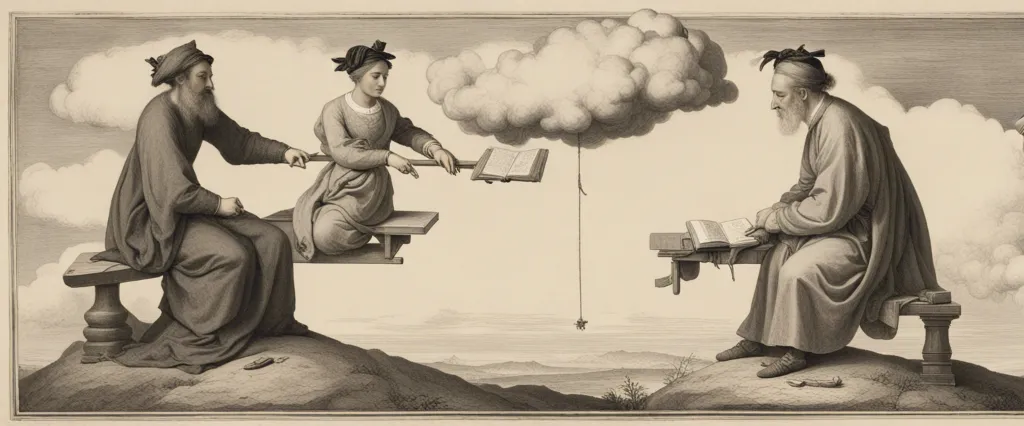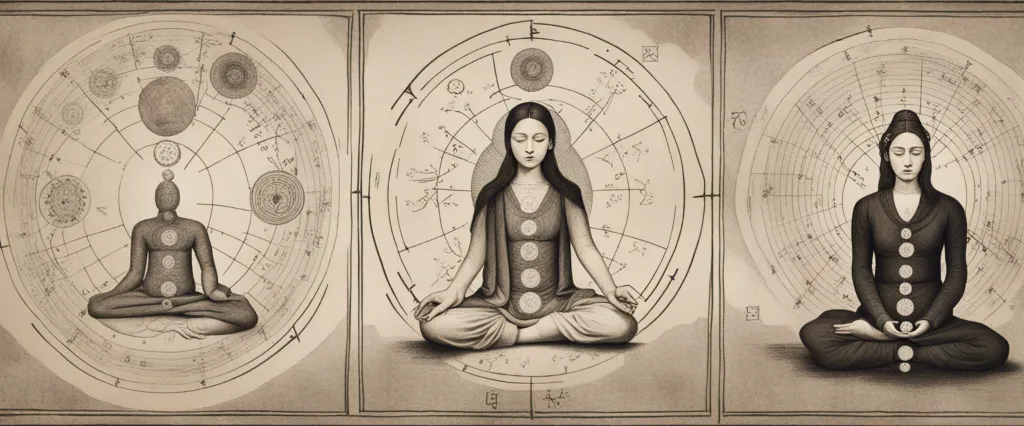In “Eastern Body,Western Mind,” Anodea Judith presents a captivating exploration of the ancient Eastern understanding of the chakra system and its relevance in today’s Western society. Delving into the realm of psychology and personal growth, Judith masterfully combines the wisdom of the East with contemporary therapeutic practices. As a highly respected expert in the field of chakra psychology, Anodea Judith has dedicated her life to bridging the gap between Eastern spirituality and Western thought, offering individuals a holistic path to self-discovery and transformation.
Chapter 1: Energy and the Mind-Body Connection
Chapter 1 of “Eastern Body, Western Mind” by Anodea Judith explores the profound connection between energy and the mind-body complex. The chapter begins by introducing the concept of chakras, which are described as energy centers within our bodies that correspond to various aspects of our physical, emotional, and spiritual well-being.
Judith then discusses the mind-body connection, emphasizing the interplay between our thoughts, emotions, and physical experiences. She posits that our thoughts and emotions have a direct impact on our physical health and overall energy flow. For example, negative emotions and beliefs can lead to blockages or imbalances in our energy system, which can manifest as physical ailments or psychological disturbances.
The author introduces the concept of prana, the life force energy, which flows through our chakras and determines the vitality and balance of our bodies and minds. Judith emphasizes that cultivating a harmonious and balanced energy system is vital for optimal well-being and personal growth.
Throughout the chapter, the author presents case studies to illustrate how imbalances in the energy system can lead to various psychological and physical issues, such as anxiety, depression, chronic pain, and relationship problems. She highlights the importance of addressing these imbalances through energy-based therapies and practices to restore health and vitality.
In summary, Chapter 1 of “Eastern Body, Western Mind” provides an introduction to the concept of chakras and explores the intricate relationship between energy, emotions, and the mind-body complex. It emphasizes the significance of cultivating a balanced energy system for holistic well-being and presents real-life examples to illustrate the impact of energetic imbalances on our physical and psychological health.
Chapter 2: The Seven Centers of Body Energy
Chapter 2 of “Eastern Body, Western Mind” by Anodea Judith delves into the concept of the seven centers of body energy, also known as the chakras. The author explores the symbolism and practical aspects of these energy centers that are believed to exist within the human body.
Judith begins by highlighting the importance of energy flow in the body and its connection to physical, emotional, and spiritual well-being. She describes the chakras as spinning wheels or vortexes of energy, each representing different aspects of human existence.
Starting from the base of the spine, the first chakra, known as the root chakra, symbolizes our connection to the earth, survival, and stability. Moving up, the second chakra, the sacral chakra, relates to emotions, creativity, sexuality, and pleasure. The third chakra, the solar plexus chakra, is associated with personal power, confidence, and self-esteem. It is located in the area above the navel.
The heart chakra, the fourth one, represents love, compassion, and connection. The fifth chakra, also known as the throat chakra, relates to self-expression, communication, and speaking one’s truth. Moving higher up, the sixth chakra is the third eye chakra, located between the eyebrows, which represents intuition, imagination, and inner vision.
Finally, the seventh chakra, the crown chakra, is located at the top of the head and signifies our connection to the divine and spiritual enlightenment.
Throughout the chapter, Judith delves deeper into the characteristics, imbalances, and blockages that may occur in each chakra. She explains that by understanding and working with these energy centers, individuals can achieve better balance, healing, and growth in all aspects of their lives.
Overall, Chapter 2 provides a comprehensive overview of the seven chakras, shedding light on their significance in the human energy system, and offering practical guidance on how to cultivate and balance these energies for overall well-being and personal development.
Chapter 3: Blocks and Balances in Body Energy
Chapter 3: Blocks and Balances in Body Energy of the book “Eastern Body, Western Mind” by Anodea Judith discusses the concept of energy blocks and imbalances within the human body.
The chapter explores the seven major energy centers, or chakras, which are interconnected with various physical, emotional, and psychological aspects of our beings. Using a combination of Eastern and Western psychological theories, Judith illuminates how energy blockages can occur within these chakras, disrupting the natural flow of energy and leading to physical and psychological health issues.
Judith begins by explaining that each chakra represents different developmental stages and aspects of our lives, such as survival, sexuality, power, love, communication, intuition, and spirituality. When these energy centers become blocked or imbalanced, they can manifest as physical ailments or emotional difficulties related to those specific areas of life.
Throughout the chapter, she provides examples of common energy blocks and their corresponding effects on individuals. For instance, a block in the root chakra (associated with survival and physical well-being) can lead to chronic fear, anxiety, or physical issues related to the lower body. Imbalances in the heart chakra (associated with love and connection) can result in relational difficulties and emotional detachment.
Furthermore, Judith emphasizes the importance of restoring balance to these energy centers. She discusses various techniques, including therapy, somatic practices, meditation, and yoga, that can help release energy blockages and cultivate a healthier energy flow.
Overall, Chapter 3 of “Eastern Body, Western Mind” highlights the significance of understanding and addressing energy imbalances within the body. By recognizing and working to release these blocks, individuals can foster greater physical and emotional well-being, leading to a more harmonious and fulfilled life.
Chapter 4: Emotions and Body Energy

Chapter 4 of “Eastern Body, Western Mind” by Anodea Judith explores the intricate connection between emotions and body energy. The chapter delves into the concept of the second chakra – known as the sacral chakra – and its role in regulating our emotions, desires, and creative energies.
Judith begins by highlighting the significance of emotions in our lives and their profound impact on our well-being. Emotions are described as the driving force behind our actions and experiences, influencing both our internal state and our interactions with others. The sacral chakra, located in the lower abdomen, is the energy center that governs these emotions and is intimately connected to our sensual and sexual energy.
The author explains that each chakra is associated with a particular element, and in the case of the sacral chakra, the element is water. Water symbolizes fluidity, adaptability, and creativity, and it embodies the flow of emotions within us. When the sacral chakra is balanced and energy flows freely, we harness our emotional energy in a healthy and creative way.
However, imbalances in the sacral chakra can lead to various issues. Anodea Judith describes how a deficiency in this chakra can result in emotional numbness, lack of creativity, and a disconnection from one’s desires. On the other hand, an excess of energy in the sacral chakra can lead to emotional volatility, addictive behaviors, and obsessive attachment.
The chapter provides practical exercises and techniques to help balance and heal the sacral chakra, such as working with affirmations, visualizations, and movement practices. Judith emphasizes the importance of acknowledging and feeling our emotions fully, as well as finding healthy ways to express and channel them.
In summary, Chapter 4 of “Eastern Body, Western Mind” explores the deep connection between emotions and the sacral chakra, shedding light on the role of this energy center in our emotional well-being and creative expression. It offers tools and practices to cultivate a balanced and harmonious relationship with our emotions, enabling us to tap into our innate creativity and live more authentically.
Chapter 5: Body Energy and Interpersonal Relationships
Chapter 5 of “Eastern Body, Western Mind” by Anodea Judith explores the connection between body energy and interpersonal relationships. This chapter delves into the concept of chakras, or energy centers within the body, and how they influence our ability to connect with others.
The chapter begins by examining the root chakra, located at the base of the spine, and its association with our fundamental sense of survival and safety. Judith discusses how a healthy root chakra provides a stable foundation for relationships, as it instills a feeling of belonging and security within us. She also describes how imbalances in this chakra can lead to feelings of fear, insecurity, and an inability to establish and maintain healthy relationships.
Moving up the energy system, the author then explores the sacral chakra, located in the lower abdomen, and its association with sensuality, creativity, and emotional expression. Judith emphasizes how a balanced sacral chakra is crucial in forming intimate connections with others, as it enables us to experience pleasure, passion, and vulnerability. Imbalances in this chakra, such as a lack of emotional expression or excessive attachment to pleasure, can hinder our ability to form deep and meaningful relationships.
The chapter further discusses the solar plexus chakra, associated with personal power and self-esteem, and its impact on assertiveness, confidence, and the ability to set healthy boundaries within relationships. Judith explains how a balanced solar plexus chakra allows us to express ourselves authentically while respecting the boundaries of others.
Lastly, the author explores the heart chakra, located in the center of the chest, and its association with love, compassion, and forgiveness. She highlights how an open and balanced heart chakra enhances our capacity for empathy, connection, and unconditional love.
Overall, Chapter 5 of “Eastern Body, Western Mind” introduces the reader to the intricate connection between body energy and interpersonal relationships. It emphasizes the importance of attaining balance in each chakra to foster healthy and fulfilling connections with others.
Chapter 6: Body Energy and Self-Expression
Chapter 6: Body Energy and Self-Expression of the book “Eastern Body, Western Mind” by Anodea Judith focuses on the third chakra, known as the solar plexus chakra or Manipura in the Eastern tradition. This chakra is associated with personal power, willpower, self-esteem, and self-expression.
The chapter begins by discussing how the third chakra is crucial for our ability to express ourselves authentically in the world. It is the seat of our personal power and confidence, enabling us to set goals, take action, and manifest our desires. When this chakra is balanced, we are assertive, confident, and have a healthy sense of self-worth, enabling us to express our needs and desires without suppressing or dominating others.
Anodea Judith explores how imbalances in the solar plexus chakra can manifest in various ways. For example, an underactive third chakra may result in low self-esteem, lack of confidence, and difficulties in asserting oneself. On the other hand, an overactive chakra can lead to arrogance, a domineering attitude, or a tendency to control others.
The author provides practical techniques and exercises to balance and heal the solar plexus chakra. These include affirmations, visualizations, movement exercises, and embracing personal power. By balancing this chakra, individuals can enhance their ability to express themselves authentically, make choices that align with their true selves, and create a sense of personal power in the world.
Overall, Chapter 6 explores the importance of the solar plexus chakra in self-expression and personal power. Through understanding and working with this chakra, individuals can cultivate a healthy sense of self-esteem, assertiveness, and confidence, enabling them to express themselves authentically and manifest their desires in the world.
Chapter 7: Body Energy and Gender
Chapter 7: Body Energy and Gender of the book “Eastern Body, Western Mind” by Anodea Judith delves into the intricate relationship between body energy and gender. The chapter revolves around the concept of the chakra system, which is a foundational framework in Eastern philosophy and energy work.
Anodea Judith focuses on how the chakras, or the energy centers in our bodies, interact with and correspond to the experience of gender. She presents the idea that each gender is associated with a particular polarity of energy, which flows through the body via the chakras.
Starting with the root chakra, which is connected to survival and grounding, Judith explores the basic gender differences. She suggests that men tend to be more focused on the external world and the physical aspects of life, while women lean towards internal experiences and relationships.
Moving up the chakra system, Judith discusses how each energy center influences and is influenced by gender. For example, the sacral chakra, associated with emotions and creativity, is considered more feminine, encouraging women to embrace their emotions and nurturing abilities. Meanwhile, the solar plexus chakra, linked to personal power and self-esteem, exhibits more masculine traits, urging men to assert themselves and take charge.
Judith emphasizes that gender is a spectrum and acknowledges the importance of transcending societal expectations and allowing for individual expression within the chakra system. She also highlights how balance in the chakras can help heal gender wounds and bring about a deeper understanding of oneself and others.
In conclusion, Chapter 7 of “Eastern Body, Western Mind” explores how the chakra system plays a role in shaping gender experiences. By understanding and working with these energy centers, individuals can achieve a more holistic and balanced view of their gender identity, promoting self-growth and compassion.

Chapter 8: Integration and Healing of Body Energy
Chapter 8 of the book “Eastern Body, Western Mind” by Anodea Judith titled “Integration and Healing of Body Energy” focuses on the process of integrating and healing our body’s energy centers, also known as chakras. The chapter explores how to balance and harmonize our chakras to achieve overall well-being and spiritual growth.
The author begins by emphasizing the significance of integrating the chakras into one coherent system, as each chakra represents different aspects of our physical, emotional, and spiritual selves. Judith presents a detailed analysis of each chakra and its corresponding qualities, providing exercises and meditations that aim to cleanse and align these energy centers.
Starting from the Root Chakra, which represents our basic primal needs and grounding, the author proceeds to guide readers through other chakras, such as the Sacral, Solar Plexus, Heart, Throat, Third Eye, and Crown Chakras. Each chakra is explored in terms of its imbalances, potential blockages, and the corresponding emotional and physical issues that may arise as a result.
Judith encourages readers to engage in various healing techniques, including body movement, breathwork, visualization, chanting, and affirmations, to address imbalances within each chakra. By working through these imbalances, individuals can unlock their potential for personal growth and self-realization.
Overall, the chapter emphasizes the importance of integrating and healing our body’s energy centers to restore balance, alignment, and vitality in all areas of our lives. Through the practices and exercises presented in this chapter, readers are provided with valuable tools to nurture and transform their inner energy system, contributing to overall well-being and spiritual development.
After Reading
In conclusion, “Eastern Body, Western Mind” by Anodea Judith is a comprehensive guide that combines Western psychology with Eastern philosophy. The book explores the seven main chakras, or energy centers, and how they are related to psychological and emotional development. By understanding the intricate connection between mind, body, and spirit, Judith provides valuable insights and practical exercises to help individuals heal and balance their energy system. Through her holistic approach, the author encourages readers to integrate Eastern wisdom into their Western framework, fostering personal growth and a greater connection with the world around them. Ultimately, “Eastern Body, Western Mind” offers a roadmap for self-discovery and transformation, bridging the gap between the Eastern and Western understanding of the human experience.
1. “The Wisdom of Yoga: A Seeker’s Guide to Extraordinary Living” by Stephen Cope – This book delves into the Eastern teachings of yoga and provides practical insights on integrating these ancient practices into modern life. It explores the mind-body connection, spiritual growth, and the transformative power of yoga.
2. “The Seven Spiritual Laws of Success” by Deepak Chopra – Focusing on the intersection between Eastern spirituality and Western psychology, Deepak Chopra offers principles for achieving success based on timeless wisdom. This book combines spiritual teachings with practical advice to help readers align with their true purpose and create a harmonious life.
3. The Body Keeps the Score: Brain, Mind, and Body in the Healing of Trauma” by Bessel van der Kolk – Drawing from both Eastern and Western perspectives, van der Kolk explores the effects of trauma on the mind and body. This book provides valuable insights into the connection between our physiological responses and emotional experiences, offering techniques and therapies for healing and recovery.
4. The Power of Now: A Guide to Spiritual Enlightenment” by Eckhart Tolle – Tolle’s renowned spiritual guide draws from various spiritual traditions, including Buddhism and Hinduism, to illuminate the importance of living in the present moment. This book offers profound insights into transcending the ego and finding peace and fulfillment in the here and now.
5. The Alchemist” by Paulo Coelho – This enchanting and thought-provoking novel follows the journey of a young shepherd as he embarks on a search for his destiny and discovers the true meaning of life. Drawing from mystical traditions and spiritual teachings, Coelho’s book explores themes relating to self-discovery, destiny, and the interconnectedness of all things.




